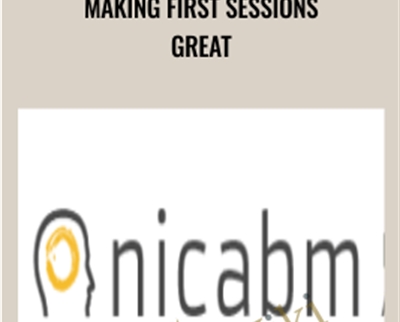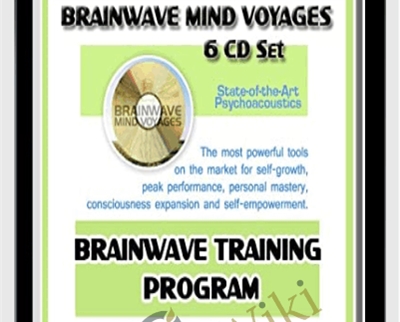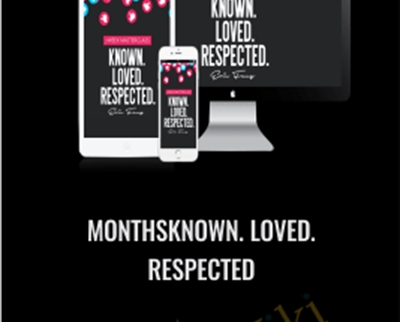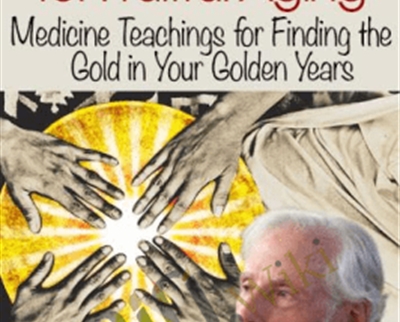Making First Sessions Great-NICABM – Ruth Buczynski
$31.00
Making First Sessions Great-NICABM – Ruth Buczynski Download. The transcript makes it easy to go back and double check concepts, citations and names that a…
Salepage link: At HERE. Archive: http://archive.is/hPJqh
Making First Sessions Great
How To Make Your First Session So Effective That Your Clients Leave Full Of Hope, Commitment To Change and Motivation To Do The Work
More than 20 percent of clients won’t come back for a second session.
That’s why first sessions really matter.That first meeting with a new client can determine whether or not they continue with treatment.
So how do we make sure our first session is so powerful and so effective that our clients leave with hope, commitment and motivation to do the work?
We asked 17 top experts to tell us what they think about when approaching a first session. What are their goals? How do they start? How do they work with the challenges that first sessions present? What are the warning signs they look for?
They shared their insights and strategies – ones that you can apply to your work with clients today.
Successful Strategies to Make Your First Sessions Great
Planting Seeds for Success in the First Session
Lynn Lyons, LICSW Ron Siegel, PsyD
- One simple but effective pre-session communication that can prime your work for success
- How to have clients leave your first session brimming with hope and confidence
- One adjustment to your initial client assessment that can boost engagement and motivation
First Sessions with Challenging Clients
Marsha Linehan, PhD Ron Siegel, PsyD Rick Hanson, PhD
- A first session compatibility check to gauge proper practitioner/client fit
- The crucial empathic connection that can defuse a client’s initial defensiveness
- One change to a behavior-modeling technique that can save your client from feeling criticized
- How to present feedback so the client doesn’t fall prey to harmful self-blame
How to Manage a Client’s Expectations for Treatment
Christine Padesky, PhD Rick Hanson, PhD
- An immediate way to remedy a new client’s unrealistic expectations for therapy
- One approach to address a client’s low motivation (and turn it into a more fruitful first session)
What a Client’s Nervous System Needs in the First Session
Stephen Porges, PhD Kelly McGonigal, PhD
- The specific parts of your clinical environment that may be triggering your client’s defensiveness
- How white noise generators can actually drive up your client’s fear and arousal
- One way your voice can open the portal of presence and engagement with a new client
How to Foster Greater Client Disclosure for More Accurate Diagnoses
Shelly Harrell, PhD Ron Siegel, PsyD
- How to dilute the power dynamic in a first session so the client feels comfortable taking risks
- How to work with the hidden cultural factors that may be sabotaging your first session
- One simple question at the beginning and end of a first session that can lead to more accurate diagnoses
How to Address Common Warning Signs in the First Session
Ron Siegel, PsyD indel Segal, PhD Rick Hanson, PhD
- Three warning signs that can derail a successful first session
- Why a client’s oversharing in a first session may signal a potential early dropout
- How to disarm the first sign that a client may be idealizing your work
A Body-Focused Approach to a Successful First Session
Pat Ogden, PhD Kelly McGonigal, PhD
- How a new client’s body movement can reveal hidden sources for healing
- One way to uncover and expand actions of hope that may be trapped in the client’s nervous system
- An important reframe in the first session that can help increase a client’s agency in their healing
- One way to broaden a client’s “aspirational window” so they leave the first session with a sense of hope
Key Skills to Alleviate a New Client’s Feeling of Vulnerability
Dan Siegel, MD Kelly McGonigal, PhD Richard Schwartz, PhD
- How to keep a client’s social engagement system from thwarting the first session
- Nine practitioner behaviors that can directly affect clinical outcomes
- How to fend off attacks from a client’s most vulnerable parts when they turn protective
How to Build Hope in the First Session
Bill O’Hanlon, LMFT Rick Hanson, PhD
- A counterintuitive way to immediately connect clients to feelings of hope and possibility
- How to expand a client’s capacity to see beyond their problem and into a better future
- A first session approach to help shift a client’s negative mindset
Strengthening a New Client’s Commitment to Therapy
Rick Hanson, PhD Kelly McGonigal, PhD
- The “three pile” approach to a first assessment that can reveal untapped opportunities for healing
- Two unconscious judgments when we first meet someone that can block a therapeutic connection
- Why your client’s issue may stem from a “scaling” problem (and how to boost their commitment to improve it)
How Your Opening Question Can Set the Tone for Success
Ellyn Bader, PhD Rick Hanson, PhD
- How to phrase your initial greeting so it becomes a litmus test of the client’s motivation
- A practical strategy to help clients self-assess problematic behavior (and boost accountability)
- How to transform a tension-filled first session with couples into a positive commitment to problem-solving
- How to help clients “buy in” to doing the important work in your treatment plan
Building a Strong Therapeutic Bond That Will Last Beyond the First Session
Bill O’Hanlon, LMFT Joan Borysenko, PhD Kelly McGonigal, PhD
- How to connect a new client’s talents to beneficial therapeutic experiences
- The conversational shift that marks the exact moment a client is ready for change
- Two important questions at the end of a first session to verify you (and the client) are on the right track
Two Ways to Work with an Underlying Medical Issue in the First Session
Ron Siegel, PsyD Dan Siegel, MD Joan Borysenko, PhD
- The important first step when a client’s issue may have an underlying medical problem
- A vital query to help pinpoint the exact way a client’s problem is keeping them stuck
- The five integral components of meaning to help shift a new client’s mindset about their experience
Here’s What You’ll Get:
Everything is yours to keep forever in your professional library
- Downloadable videos so you can watch at your convenience, on any device
- Audio recordings you can download and listen to at home, in the car, at the gym or wherever you like
- Professionally-formatted transcripts of the sessions, to make review and action simple
- Two downloadable bonuses to help you work more effectively in a first session
Why the Transcript Is Essential:
- The transcript makes it easy to go back and double check concepts, citations and names that are mentioned
- We put in a table of contents to make it easy for you to find the exact part of the session you need
- Having the concepts already written allows you to take notes on how you’re going to use the ideas rather than transcribing the ideas
- Some people simply learn better by reading than by listening or watching
- You will be able to print out and share techniques presented in the session with your patients
Here's an overview of the prominent keywords and a list of famous authors:
Business and Sales: Explore business strategies, sales skills, entrepreneurship, and brand-building from authors like Joe Wicks, Jillian Michaels, and Tony Horton.
Sports and Fitness: Enhance athleticism, improve health and fitness with guidance from experts like Shaun T, Kayla Itsines, and Yoga with Adriene.
Personal Development: Develop communication skills, time management, creative thinking, and enhance self-awareness from authors like Gretchen Rubin, Simon Sinek, and Marie Kondo.
Technology and Coding: Learn about artificial intelligence, data analytics, programming, and blockchain technology from thought leaders like Neil deGrasse Tyson, Amy Cuddy, and Malcolm Gladwell.
Lifestyle and Wellness: Discover courses on holistic health, yoga, and healthy living from authors like Elizabeth Gilbert, Bill Nye, and Tracy Anderson.
Art and Creativity: Explore the world of art, creativity, and painting with guidance from renowned artists like Bob Ross and others.
All the courses on WSOlib are led by top authors and experts in their respective fields. Rest assured that the knowledge and skills you acquire are reliable and highly applicable.
Specification: Making First Sessions Great-NICABM – Ruth Buczynski
|
User Reviews
Only logged in customers who have purchased this product may leave a review.

$31.00












There are no reviews yet.